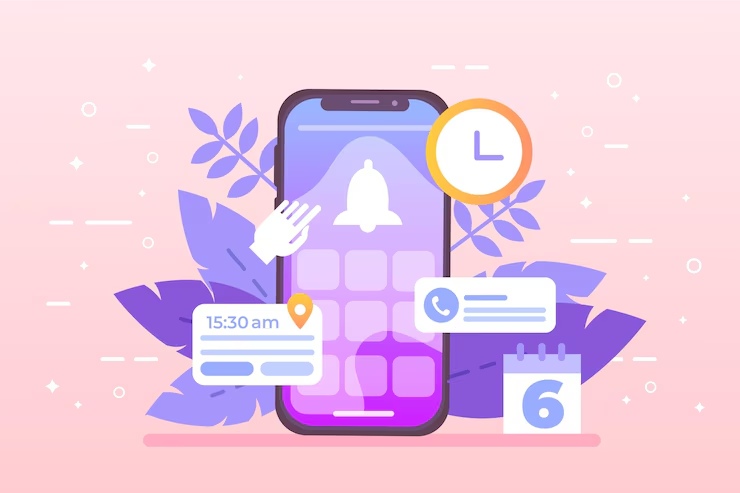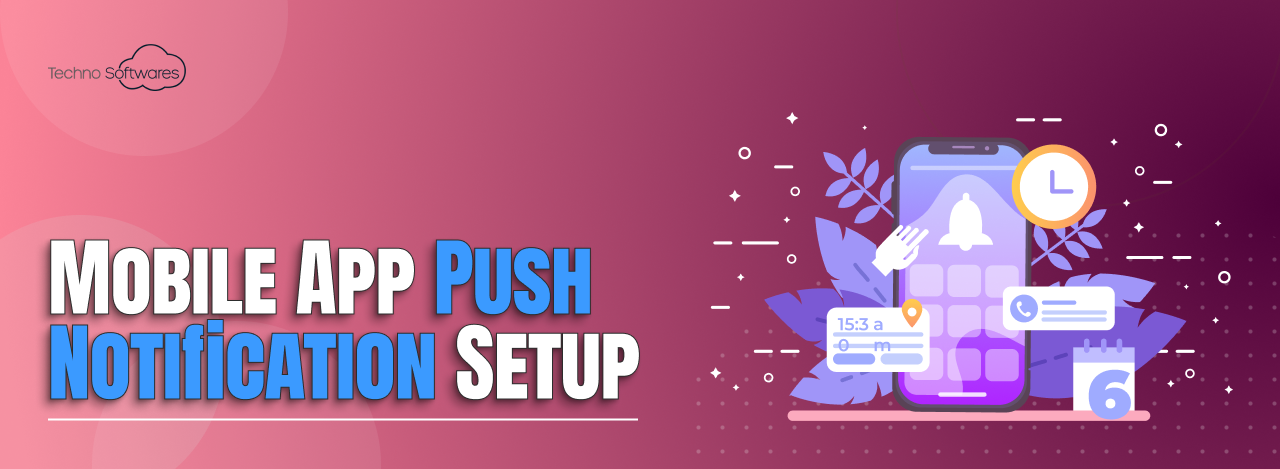How to Implement Push Notifications in Mobile Apps
In the digital landscape, push notifications have emerged as a powerful tool for engaging users and enhancing their experience with mobile applications. These messages, which can appear on a user’s device even when the app is not actively in use, serve as a direct line of communication between businesses and their audience. By delivering timely updates, reminders, and personalized content, push notifications can significantly increase user retention and drive engagement.
As we delve deeper into the world of push notifications, we begin to appreciate their potential to transform how we interact with our users. Push notifications are not just about sending messages; they are about creating meaningful interactions. When we think about the effectiveness of push notifications, we must consider the timing, relevance, and frequency of these messages.
A well-timed notification can prompt users to take action, whether it’s completing a purchase, engaging with new content, or returning to an app they haven’t used in a while. However, if we bombard users with irrelevant or excessive notifications, we risk alienating them and diminishing the value of our communication. Thus, understanding the nuances of push notifications is crucial for maximizing their impact.
Key Takeaways
- Push notifications are short messages that pop up on a user’s mobile device to provide timely information and engage with the audience.
- When choosing the right push notification service, consider factors such as audience segmentation, personalization, and analytics capabilities.
- Setting up push notifications in your mobile app involves integrating a push notification service provider’s SDK and obtaining necessary permissions from users.
- Customizing push notifications for your audience involves creating targeted and relevant messages based on user behavior and preferences.
- Testing and optimizing push notifications is crucial for ensuring that messages are delivered effectively and resonate with the audience.
Choosing the Right Push Notification Service
Key Features of a Push Notification Service
A robust push notification service will not only allow us to send messages but also provide insights into user behavior and engagement metrics. Moreover, we should consider the level of customization offered by different services. A good push notification platform will enable us to tailor our messages to different segments of our audience, ensuring that we deliver relevant content that resonates with users.
Evaluating Reliability and Performance
Additionally, we must assess the reliability and performance of the service. A platform that experiences frequent downtime or delays in message delivery can hinder our communication efforts and frustrate our users. By carefully evaluating our options, we can choose a push notification service that aligns with our objectives and enhances our overall user experience.
Choosing the Right Service for Our Needs
Ultimately, the right push notification service will depend on our specific requirements and goals. By considering factors such as ease of integration, customization, reliability, and analytics capabilities, we can make an informed decision that supports our user engagement strategy.
Setting Up Push Notifications in Your Mobile App

Once we have chosen a suitable push notification service, the next step is to set up push notifications within our mobile app. This process typically involves integrating the chosen service’s SDK (Software Development Kit) into our app’s codebase. As we embark on this integration journey, we must ensure that we follow best practices to create a seamless experience for our users.
This includes obtaining user consent for receiving notifications and providing clear explanations of what types of messages they can expect. After integrating the SDK, we can begin crafting our first push notifications. It’s essential to start with a clear strategy in mind—what do we want to achieve with our notifications?
Whether it’s driving traffic to a new feature or encouraging users to complete a task, having a defined goal will guide our messaging. Additionally, we should consider implementing rich media notifications that include images or action buttons to enhance user engagement further. By thoughtfully setting up push notifications in our mobile app, we lay the groundwork for effective communication with our audience.
Customizing Push Notifications for Your Audience
Customization is key when it comes to push notifications; it allows us to connect with our audience on a more personal level. By segmenting our user base based on demographics, behavior, or preferences, we can tailor our messages to meet their specific needs and interests. For instance, if we have an e-commerce app, we might send targeted promotions to users who have previously shown interest in certain products or categories.
This level of personalization not only increases the likelihood of engagement but also fosters a sense of loyalty among users. In addition to segmentation, we should also consider the tone and style of our notifications. The language we use can significantly impact how users perceive our brand.
A friendly and conversational tone may resonate well with younger audiences, while a more formal approach might be appropriate for professional applications. By aligning our messaging with our brand identity and audience expectations, we can create push notifications that feel relevant and engaging. Ultimately, customization empowers us to deliver content that truly speaks to our users.
Testing and Optimizing Push Notifications
Testing and optimization are vital components of any successful push notification strategy. As we begin sending out notifications, it’s essential to monitor their performance closely. We should analyze metrics such as open rates, click-through rates, and conversion rates to gauge the effectiveness of our messages.
By identifying patterns in user behavior, we can gain valuable insights into what resonates with our audience and what doesn’t. A/B testing is an effective method for optimizing push notifications. By experimenting with different message formats, timings, and content types, we can determine which variations yield the best results.
For example, we might test two different headlines for the same notification to see which one generates more engagement. This iterative approach allows us to refine our strategy continuously and ensure that we are delivering the most impactful messages possible. Through diligent testing and optimization, we can enhance the effectiveness of our push notifications over time.
Analyzing the Impact of Push Notifications

Measuring Effectiveness Through Quantitative Data
The use of quantitative data is essential in measuring the effectiveness of push notifications. By tracking key performance indicators such as click-through rates, conversion rates, and retention rates, we can determine the success of our notification campaigns. This data provides valuable insights into how users interact with our notifications and helps us identify areas for improvement.
Gathering Qualitative Feedback
Furthermore, qualitative feedback from users can provide additional insights into how they perceive push notifications. Surveys or in-app feedback mechanisms can help us gather opinions on notification frequency, content relevance, and overall satisfaction. This feedback is crucial in understanding the user’s perspective and making adjustments to our notification strategy.
Combining Data for Informed Decision-Making
By combining quantitative data with qualitative insights, we can develop a comprehensive understanding of how push notifications influence user behavior and make informed decisions about future campaigns. This integrated approach enables us to refine our notification strategy, optimize user engagement, and ultimately drive business growth.
Optimizing Push Notification Strategy
Ultimately, the key to a successful push notification strategy is to continuously monitor and optimize our approach based on user feedback and performance data. By doing so, we can ensure that our notifications are well-received, effective, and aligned with our overall marketing goals.
Ensuring Compliance with Privacy Regulations
As we navigate the world of push notifications, it is imperative that we remain compliant with privacy regulations such as GDPR (General Data Protection Regulation) and CCPA (California Consumer Privacy Act). These regulations set strict guidelines on how businesses collect and use personal data, including obtaining explicit consent from users before sending them notifications. We must prioritize transparency by clearly communicating how user data will be used and providing options for users to manage their notification preferences.
Failure to comply with privacy regulations can result in severe penalties and damage to our brand reputation. Therefore, it is essential that we implement robust data protection measures and regularly review our practices to ensure compliance. By fostering trust with our users through responsible data handling practices, we not only protect ourselves legally but also enhance user loyalty and engagement.
Partnering with Techno Softwares for Seamless Integration
To streamline the process of implementing push notifications in our mobile app, partnering with a reputable software development company like Techno Softwares can be immensely beneficial. With their expertise in mobile app development and integration services, they can help us navigate the complexities of setting up push notifications effectively. Their team can assist us in selecting the right technology stack and ensuring that all components work seamlessly together.
Moreover, Techno Softwares can provide ongoing support and maintenance as we refine our push notification strategy over time. Their insights into industry best practices can guide us in optimizing our messaging and improving user engagement continuously. By collaborating with Techno Softwares, we position ourselves for success in leveraging push notifications as a powerful tool for connecting with our audience and driving business growth.
In conclusion, understanding push notifications is just the beginning of a journey that requires careful planning, execution, and analysis. By choosing the right service provider, customizing messages for our audience, testing strategies rigorously, ensuring compliance with regulations, and partnering with experts like Techno Softwares, we can harness the full potential of push notifications to enhance user engagement and drive meaningful interactions within our mobile applications.
If you are interested in learning more about website security, you should check out the article Got Malware on Your WordPress Website?. This informative piece discusses the importance of keeping your website safe from malicious software and offers tips on how to detect and remove malware from your WordPress site. It is crucial to prioritize security measures to protect your online presence and maintain the trust of your visitors.
FAQs
What are push notifications in mobile apps?
Push notifications are messages that are sent from a server to a mobile app, and they appear on the user’s device even when the app is not open. They can be used to deliver important information, updates, or reminders to the app users.
How can push notifications benefit mobile apps?
Push notifications can benefit mobile apps by increasing user engagement, driving app usage, and improving user retention. They can also be used to deliver personalized content, promote special offers, and provide real-time updates to users.
What are the steps to implement push notifications in mobile apps?
The steps to implement push notifications in mobile apps include setting up a push notification service, integrating the necessary SDKs or APIs into the app, obtaining the required permissions from users, and creating and sending targeted push notifications to users.
Can Techno Softwares integrate push notifications for mobile apps?
Yes, Techno Softwares has the expertise to integrate push notifications into mobile apps. Their team can help with setting up push notification services, integrating the necessary APIs, and creating and sending targeted push notifications to app users.





